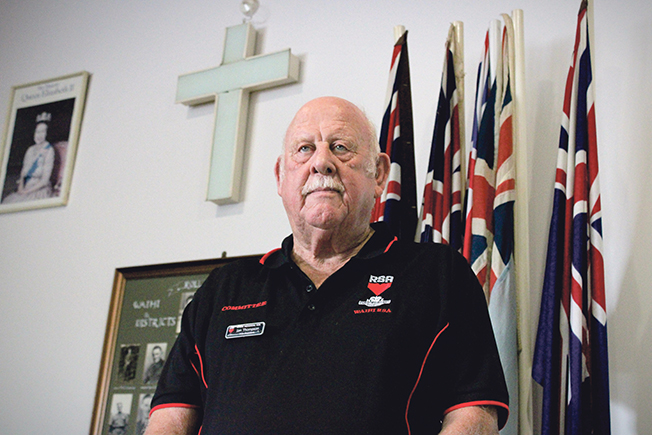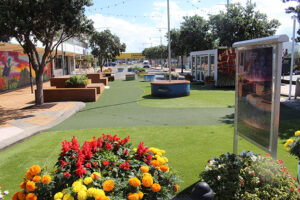Ian Thompson was watching a war movie starring John Wayne with his fellow “sigs” – the Royal New Zealand Corps of Signals – when the sheet they’d hung up in the middle of the jungle “exploded”.
They’d been watching the film on a projector somebody had purloined.
“These are Kiwis we’re talking about,” he said.
The group was getting attacked by communist terrorists, but a company protecting Ian, who was a radio and telegraph technician, and his fellow men took control of the situation.
“We had a 44-gallon drum with ice and beer in it, which we’d obtained through the Brits, and as we went down, I pulled it over so we could continue drinking,” Ian said with a laugh.
“I still remember that. You could hear the bullets going crack overhead.”
It was 1969 when Ian arrived in Malaysia, after the conclusion of the Indonesia–Malaysia confrontation, or Borneo confrontation, which was a three-year armed conflict that ended in 1966.
However, his service started when he was 16, after he joined the RF Cadets as a boy entrant.
After graduating, he became part of the Royal New Zealand Corps of Signals, who were responsible for providing, co-ordinating, and operating the communications networks of the New Zealand Army. He was posted to Papakura, Auckland, before he was sent to Haddington in Christchurch.
“We used to do our exercises in Malaysia once a year… I did one that was three months long, just before the confrontation ended. That was fun,” Ian said, “stuck in the middle of the jungle, miles from anywhere”.
After he left Christchurch, Ian, originally from Tawa, spent four-and-a-half years in Singapore, working on a transmitting station. He returned to New Zealand in 1973 and that year he married his wife, Diane.
He was posted to the Defence Headquarters as a computer engineer before leaving the army in 1977.
“The reason I got out was because they wanted to post me to the School of Signals in Waiouru, and I had three young kids, so I said ‘no’.”
After many “escapades”, the returned serviceman arrived in Waihī, and on his first Friday in the Hauraki town, he signed up to its RSA – where he is now the vice president.
Every week he has a beer with friend Collin Stephens, who, coincidentally, spent a year in the bed next to Ian in the barracks all those years ago. The Waihī RSA will have a service this Anzac Day at 11am, with a small parade around the building, followed by lunch.
Ian said his time in the army likely gave him more discipline than he would’ve had otherwise, recalling the two weeks he spent as a 13-year-old, push biking across the top of the South Island with a neighbour.
He also looks back on those days in the jungle with fond memories.
“For me, Anzac Day is a day of memory more than anything,” he said. “It’s remembering the small men, the people who did all of the grunt work and in a lot of cases, didn’t actually want to be there.
“It’s not just the signals, it’s the truck drivers, it’s the foremen, it’s the cooks, it’s everyone. That’s who you remember on Anzac Day.”




